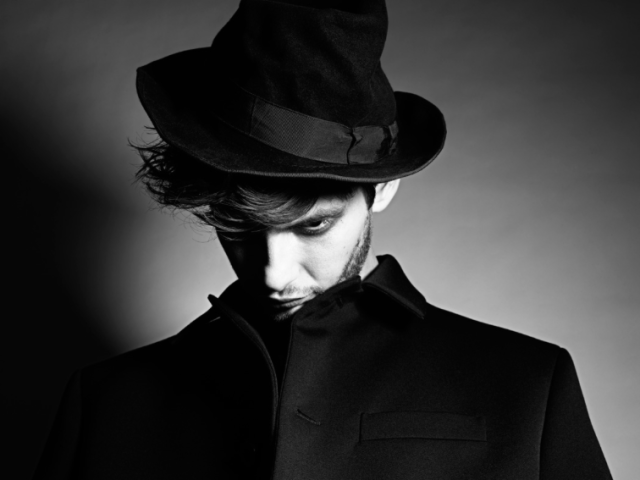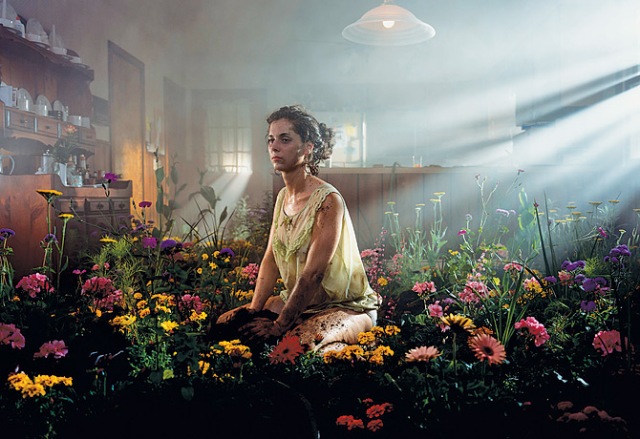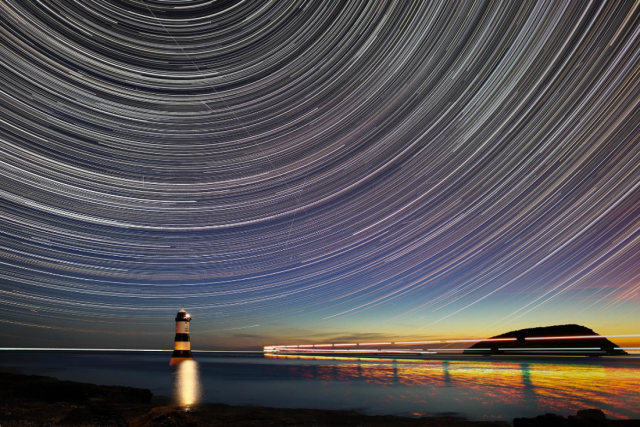Over the easter break, we were given three mini tasks to complete to prepare us for our next module 152MC: Working With Light. For this short task, we were asked to choose a minimum of 10 images and to explain why we find them interesting and the emotional response that we have towards the image due to the lighting situations. Below I have collected a few artists and photographers that use light for different reasons, as well at different techniques that you could use light for.
High-Key & Low-Key Lighting:
High and low key lighting is a very common use for the studio lighting setup which involves different lighting to create certain moods. It is highly associated with portrait photography.
High-key lighting often consists of using a key light, fill light and back light. The lighting usually consists of a bright image, used to suggest an upbeat mood. These images are usually free from dark shadows. However, high-key lighting sometimes fails to give the wanted drama or emotional punch you’d get with a low-key image.
Low-key is a style of light used not only for photography but film and television also. This type of lighting often only uses one key light, this enhances shadows and mood into the scene/photograph. Low-key light accentuates the lines and features of an object/or person, which in turn throw shadows onto areas of the object/face.
Rankin is an English portrait/fashion photographer who is known for his high and low-key photography of celebrities. Below is a high-key image of singer Florence Welch. This image is bright and looks energetic because of the use of light. There are no shadows casting on the face to create negative vibes. The light enhances the colour of the image creating an even more positive feel.
Another image by Rankin below is of actor Ben Barnes. Rankin has used low-key lighting to create a moody atmosphere here, by creating shadows and by only highlighting parts of the face. I like this use of lighting because it creates more drama for an image, especially this one. The pose of Ben Barnes only heightens the lighting further.
 The two images above by Rankin are very different and give out very contrasting moods/atmospheres.
The two images above by Rankin are very different and give out very contrasting moods/atmospheres.
Man Ray was an American modernist artist who contributed to the Dada and Surrealist movements. This image below is called ‘Glass Tears’, which consisted of having a model with one light set onto the face and droplets of water placed onto the face. The light not only highlights the skin (forehead), but also gives a life to the eyes and creates the droplets of water to be the main areas in the photograph. By using the light to highlight the teardrops, it gives an emotional response of sadness, loneliness and maybe guilt and anger. Using the light to enhance the emotional side of the photograph works well.

Gregory Crewdson is an American photographer who uses extravagant light sources to achieve high quality cinematic still photographs.
The image above is a great example of using light to your advantage. He has used strong lighting from the right hand side of the set to create this photo and create ‘sunbeams’ to enter the image and shed light onto the model and flowers. The light helps to enhance the colours within the image and make it interesting to look at because it’s bold and vibrant.
Strobe Motion (High Speed Photography) is the science of taking pictures very fast and capturing things maybe the human eye might not register. A good example of high-speed photography is that by Eadweard Muybridge who wondered when a horse ran, did any of it’s legs touch the ground. He set up a camera to capture a horse whilst running to see the result. Here is a GIF of the images that Muybridge took:

Harold Eugene Edgerton uses the brilliant idea of strobe light photography, because he captures a set of still images to create a sense of movement. The lighting enhances the movement and is interesting to the eye.

Infrared photography is very interesting to use, because it uses a infrared filter on your camera’s lens which can cause in-camera effects such as false colour or black and white image dependent on the filter. The filter blocks out certain types of wavelengths. Some filters block out chlorophyll (which is found in foliage such as trees and grass) and images with these in them appear white, giving them a snow scene appearance as you can see in the images below.


I find these two images very interesting to look at because you do not see white cacti and the top image is seen as a dream like image where it appears to be ‘covered in snow’, when in actual fact it is just a filter stop certain wavelengths.
Extended Exposures:
Light Painting is a technique that anyone can achieve if they know how to do it. All you have to do to achieve this is use a slow shutter speed (extended exposure) and something that creates light (glow sticks work well.) The image below is very interesting because you wouldn’t normally see something like this in real life as the human eye does not capture light in this way. You can use this technique to draw anything you like and create vivid and wild images with different sources of light.

Star Trails uses extended exposures like light painting, however these exposures are significantly longer. These give an interesting sense of the passing of time. The stars in the sky move constantly as the earth moves around on it’s axis which is shown below. The contrast between the still image of the landscape to the movement of the sky creates a sense of peacefulness. However, it also reminds us that even though we appear to be still, we are still in-fact moving constantly throughout the day and night.

HDR (High-dynamic range) photography is a method of using light and photography together to create higher contrasting images, creating a ‘dynamic range’ between the darkest and lightest parts of an image. These are created by putting together (stitching) multiple images of the same image in different exposure levels in editing software. These images exaggerate the contrast in the photograph and gives more depth to the image such as the image below.
Steel Wool photography is created by setting steel wool on fire and spinning it to create this dome effect. You also have to use a D-SLR camera so you can put your camera on a slow shutter speed so that the photo is exposed for about 30 seconds. This creates interesting shapes and colours for your images. It is also very similar to light painting. This image below is exciting because you can do this yourself, it’s interesting to look at and makes you wonder how it was created.

Bruno Munro is a British installation artist who is known for his lighting installations such as Field of Light. He uses different lighting situations to create images and the light is the essential main focal point to his work, such as the image below:

Not only is this interesting, but it gives a different perspective that you can use light as the focal point as well as using the light to highlight a focal point. I like this image because it’s different and exciting to look at.
From this task, I learnt that there are many different uses for light within photography and it would be good to experiment with a few ways expressed in the photographs I have looked at above. The star trails, painting with light and HDR interest me the most so I may look into these further in my spare time.

